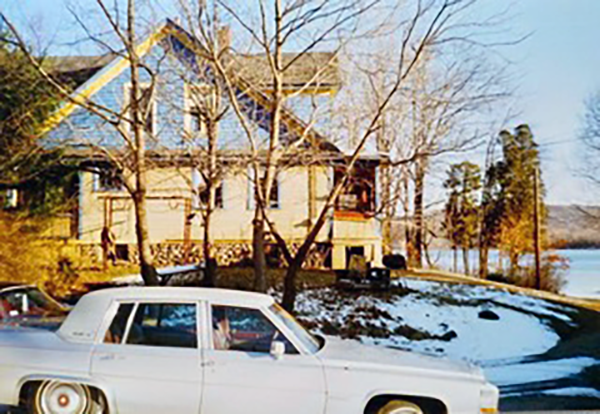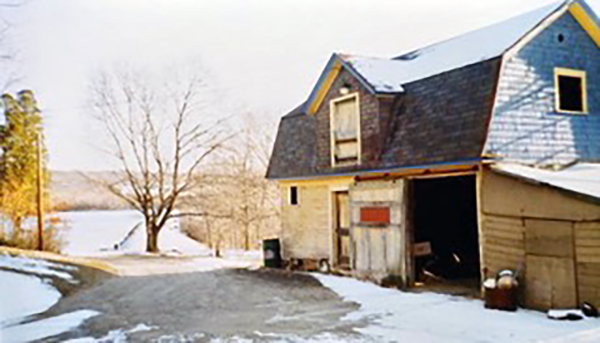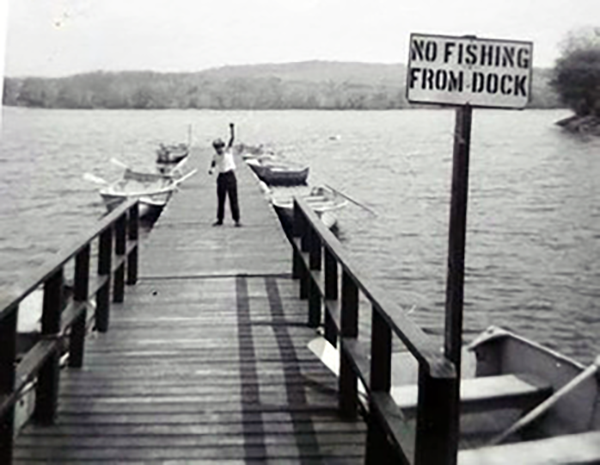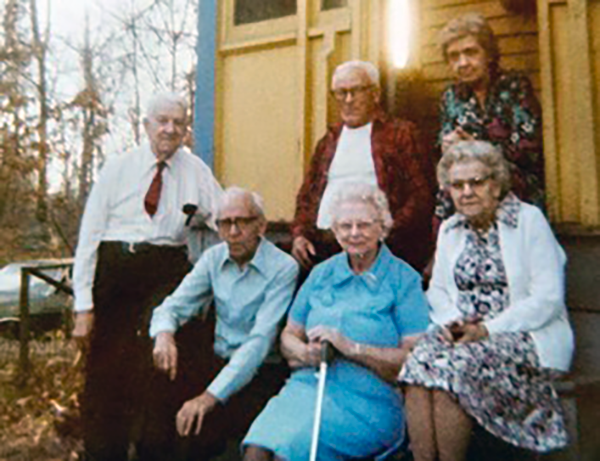|
|
||||||||||||
 |
 |
|
Wolcott Historical Society News - June 2024 By Florence Goodman Mill Pond Way, Woodtick Reservoir or Scovill's are all names that reference the 3.5-mile walking trail that has been a wonderful addition to our town since 2016. I wonder how many residents think about the history of this land as they enjoy its beauty and the solitude it allows us. This month I will revisit some of its history from an article I wrote several years ago, but I'd like to concentrate on a gentleman who played an important role at the boat launch area at the end of Scovill Road when it was owned by The Scovill Manufacturing Company.
The Upson Millpond located at the intersection of Nichols and Wolf Hill Roads is one of Wolcott's oldest reservoirs. The Mad River flowing through this area, supplied the water needed to produce power. As early as 1776 Judah Frisbie and Elnathan Thrasher operated a sawmill at this location. In 1790 the mill, land and water rights were sold to the Upson family. The Upson's built a stone, concrete and earthen dam creating a 5½-acre man-made pond known as the Upson Millpond. In 1795 Isaac Upson built a house next to the Millpond, which today is found at the entrance of the Woodtick Recreation area. This family operated a sawmill on the south side of Nichols Road in1801 and continued to live and work there until the mid 1800s.
So began the development of an important manufacturing district in the Woodtick area that flourished throughout the 19th century. Atkins gristmill, originally located below the Great Falls, south of Center Street relocated to this area. Charles Kirk operated a factory in this vicinity manufacturing brass clocks. In 1846 Bennett Upson leased the building and equipment; it later changed to a paper mill owned by Emerson M. Hotchkiss. In 1857, Hezekiah Todd and company acquired the land and continued to produce paper at this site for about ten more years.
In 1872, Gustave Cornelis purchased the Upson property where he established a rolling mill. Sadly, in 1890 the mill was destroyed by fire, but Cornelis quickly rebuilt it. He constructed a dam with four wooden flumes to carry the water under Nichols Road, which turned a water wheel to generate power to operate the mill. Cornelis became the area's most prominent landowner. It wasn't until the early 1920s that Cornelis sold his business to a firm from New Jersey and the lower dam then became known as the Cornelis Dam.
In 1912 the Waterbury-based Mad River Company began to purchase land along the Mad River for a future reservoir, but construction did not begin until 1917. This new dam created the Scovill Reservoir. It covered approximately 330 acres of land and was associated with the Scovill Manufacturing Company. Much of Fairclough Road, which originally ran from Woodtick Road straight through to the intersection of Munson and Coe Roads, was lost to the floodwaters.
The Kiwanis Camp site served as a barracks for about 300 workmen. It was these men who built the earthen dam that was constructed of natural materials brought in from the immediate area. A stone crusher was used to make three grades of rock that they used in the cement for the dam. Two 12' X 12' towers were built, one at Wolf Hill Road and one at the end of Scovill Road, which allowed them to bring cement buckets out on a cable to wherever it was needed in the construction process.
The new dam was almost as deep below ground as it was above ground. Wolf Hill Road was built to replace Fairclough Road and the section remaining became known as Scovill Road. The lower end of Bound Line Road below Coe Road was relocated. The section of Woodtick Road near Bound Line Road was raised up about five feet to prevent flooding. Farm properties that belonged to Cornelis, Herbst, Hanson, Higgins, Frisbie and Root were all lost to floodwaters.
The construction of the Woodtick Dam and Reservoir changed the path of the Mad River and the physical characteristics of the land around it forever. Farms, roads, pasture lands and stonewall boundaries were lost to these floodwaters. We even lost the original site of the Wolcott Fair Grounds, which was located on Munson Road between the river and the road close to the intersection of Brooks Hill Road.
In 1936, Mr. Leslie Hart became the caretaker of the reservoir and boat dock. He and his family lived in the house located at the end of Scovill Road. Hart stated in an article from the Waterbury Republican that, "members of Scovill Rod and Gun Club could buy a fishing permit for fifty cents." He also stated that he received ten percent commission for the permits and boat rentals, and he lived in the company owned house for fifty dollars a month. Part of Hart's job was to open and close the floodgates on the dam. He said that during World War II, Scovill was making ammunition. The water from the reservoir was used in the factory and police guarded the huge cement dam to make sure it wasn't bombed. The police were stationed at the dam twenty-four hours a day. Leslie, Loretta and their five children lived in the home at the end of Scovill Road for over fifty years. The house and barn are no longer standing, but the memories that were made there are still etched in the memories of the Hart family. Anyone that grew up in Wolcott during that time might remember Mr. Hart and some of his family members.
On June 15, 2024, at noon many of the relatives of Leslie and Loretta Hart will gather at the end of Scovill Road to remember him and celebrate the years that he served in that caretaker position. A short ceremony will take place and a plaque donated by The Wolcott Historical Society will be placed along the entrance of the boat ramp in his memory. In the future The Historical Society hopes to work with the town to develop the area where the house and barn were located and place a map and short history of the area along with a bench in Leslie Hart's memory.
(Much of the information for this article was taken from The Woodtick Dam and Reservoir by Skye MacBroom; Wolcott, Connecticut 175th Anniversary 1796 - 1971 by John Washburne; and The 1986 Historic Resources Inventory by J.P.Loetherr; The History of the Town of Wolcott, Connecticut From 1731 to 1874 by Samuel Orcutt; a 2013 phone conversation with Mary Hart, daughter-in-law to Leslie Hart)
The house where Leslie and Loretta Hart and family lived at the end of Scovill Road. It was owned by Scovill Manufacturing Company. Photo taken circa 1966-67.
The barn/garage that was next to the house and located at the end of Scovill Road. Photo taken circa 1966-67.
This is a photo of Mary Hart, Leslie and Loretta's daughter standing on the old wooden dock.
Leslie and Loretta Hart are seated in the top row of this photo. The second row from left to right are: William Dews (brother-in-law); Frank Byrne (brother-in-law); Gladys (sister); Irene Byrne (sister-in-law); Belle Byrne (sister-in-law). Byrne was Loretta Hart's maiden name.
To view past installments of the Historical Society News, click here. |
|
|
[Home]
[News]
[Purpose]
[Calendar]
[Museum]
[Membership]
[History]
[Contacts]
[Links]
All material at Wolcott Historical Society Web sites Copyright © 2000-2024 Wolcott Historical Society |



